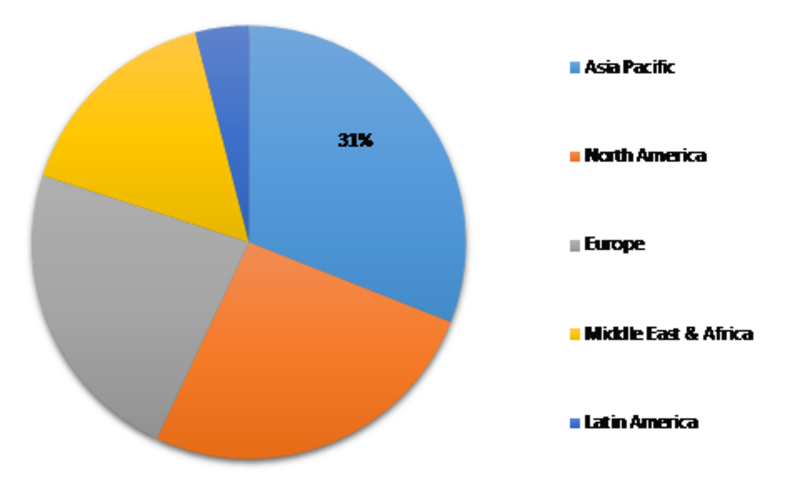Global Biomedical Textiles Market Overview:
Biomedical textiles refer to fibrous structures specifically designed for use in biological environments. These are environments where the performance of biomedical textiles depends on the biocompatibility with cells and biological tissues or fluids. These textiles are also used for first aid, hygienic and clinical purposes. Biomedical textiles are primarily expected to be non-carcinogenic, non-toxic, sterilized, non-allergic, biocompatible, chemically inert, highly durable and flexible in nature. Biomedical textiles have a broad scope of applications in fields of ophthalmology, cardiology, neurology, orthopedics, dentistry, as well as general surgery & treatment.
Get Free Sample Request @ https://www.marketresearchfuture.com/sample_request/6079
The global biomedical textiles market is anticipated to record a steady CAGR through the forecast period, as per the latest MRFR analysis. Growing healthcare industry owing to mounting healthcare expenditure, rising healthcare budget, and proliferating healthcare awareness is driving the global biomedical textiles market during the forecast period. Also, increasing population and a desire for longer lifespan are expected to ascend the global biomedical textiles market in the healthcare industry to a certain extent. A rise in the prevalence of accidents, lifestyle diseases, and frequent infection epidemics are likely to promote the demand for biomedical textiles in the coming years.
Further, upcoming technologies in the biomedical textiles industry are likely to influence higher adoption of the same, attributing to the burgeoning observed in the global biomedical textiles market by the end of 2023. However, a large capital requirement for research and developments, and production of the same for commercial sale are likely to pose as market hindrances during the assessment period.
Market Segmentation:
The global biomedical textiles market is analyzed for various segments for a clear understanding of the market scenario. Such segmentation has been carried out by fiber type, fabric type, application, and region. Based on fiber type, the global biomedical textiles market is segmented into non-woven, woven, hollow fabric, and knitted & braided fabrics.
Based on fiber type, the global biomedical textiles market is segmented into biodegradable fiber and non-biodegradable fiber. The non-biodegradable fiber segment is further sub-segmented into polyethylene, polypropylene, polyamide, polytetrafluoroethylene, polyurethane, and polyester. The biodegradable fiber segment is further sub-segmented into viscose rayon, cotton, chitin, and collagen.
Based on applications, the global biomedical textiles market is segmented into non-implantable products, implantable products, healthcare & hygiene products, and extracorporeal devices. Healthcare and hygiene products segment is further sub-segmented into surgical clothing, sanitary napkins, beddings, surgical drapes, adult incontinence products, and baby diapers. The non-implantable products segment is further studied for the sub-segments of wound care dressings, bandages, gauze, and plasters. The implantable products segment is further sub-segmented into hard tissue implants (orthopedic implants, dental implants), soft implants (hernia repair, ligament implant), cardiovascular implants (vascular graft, heart valve), and surgical sutures. The extracorporeal devices are sub-segmented into liver, artificial kidney, and lungs. Based on application, the global biomedical textiles market is segmented into ophthalmology, dentistry, neurology, orthopedics, and general surgery & treatment.
Regional Analysis:
The global biomedical textiles market is studied for the geographical segments of Latin America, North America, the Middle East & Africa, Asia Pacific, and Europe. Asia Pacific is expected to exhibit sizeable growth owing to a rise in the population, which is driving a strong need for more healthcare facilities in the region. Growing geriatric population, rising cases of chronic and lifestyle diseases, and accident cases are likely to boost growth in the global biomedical textiles market through the forecast period.
North America is estimated to witness a steady growth in the biomedical textiles market, similar to Europe, owing to a limited scope for growth during the conjectured timeline. The Middle East and Africa is anticipated to grow lucratively due to rising demand for biomedical textiles, specifically from the GCC countries. This ascension in demand can be attributed to a large number of healthcare expansion projects undertaken to strengthen the healthcare industry in the region. On the other hand, the biomedical textiles market in Latin America is anticipated to grow at a moderate pace. Brazil is likely to spearhead the country-specific biomedical textiles market, with Chile, Peru, Columbia, and Mexico following the nation.
Key Players:
Some of the noteworthy market players in the global biomedical textiles market include Secant Group, LLC (U.S.), Confluent Medical Technologies (U.S.), SWICOFIL AG (Switzerland), Johnson & Johnson Services, Inc. (U.S.), Meister & Cie AG (Switzerland), Cardinal Health. (U.S.), Smith & Nephew (UK), Medline Industries, Inc (India), Integra LifeSciences Corporation. (U.S.), PAUL HARTMANN AG (Germany), BSN medical. (Germany), B. Braun Melsungen AG (Germany), 3M (U.S.), Elkem Silicones (Norway), and ATEX TECHNOLOGIES (U.S.).
Industry Update:
June 2019: Wuyi University, in collaboration with The Hong Kong Polytechnic University (PolyU), will work on the research and development of green and healthy textiles, spanning over three years. This research will revolve around leveraging the results in various textile-related applications, including smart materials, biomedical textiles, and textile-based wearable electronics.
Browse Full Report @ https://www.marketresearchfuture.com/reports/biomedical-textiles-market-6079
About Market Research Future:
At Market Research Future (MRFR), we enable our customers to unravel the complexity of various industries through our Cooked Research Report (CRR), Half-Cooked Research Reports (HCRR), Raw Research Reports (3R), Continuous-Feed Research (CFR), and Market Research & Consulting Services.
MRFR team have supreme objective to provide the optimum quality market research and intelligence services to our clients. Our market research studies by products, services, technologies, applications, end users, and market players for global, regional, and country level market segments, enable our clients to see more, know more, and do more, which help to answer all their most important questions.
Contact:
Market Research Future
Office No. 528, Amanora Chambers
Magarpatta Road, Hadapsar,
Pune – 411028
Maharashtra, India
+1 646 845 9312
Email: sales@marketresearchfuture.com
Media Contact
Company Name: Market Research Future
Contact Person: Abhishek Sawant
Email: Send Email
Phone: +1 646 845 9312
Address:Market Research Future Office No. 528, Amanora Chambers Magarpatta Road, Hadapsar
City: Pune
State: Maharashtra
Country: India
Website: https://www.marketresearchfuture.com/reports/biomedical-textiles-market-6079

